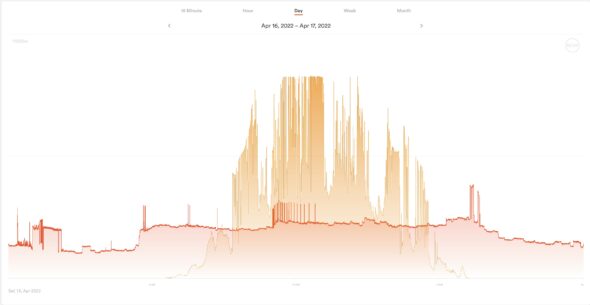Backyard Nighttime Sky Over New Jersey.
I spent my first night with the Vespera (automated deep sky camera) capturing images of several objects. I set the Vespera up on a tripod in my back patio which has a view of the sky southeast to southwest, and to the north elevations above the house. Both east and west are blocked by trees. The Vespera is controlled via WiFi by the Singularity app running on an android (or iOS) device. Unfortunately, there is not a Window or web-based app. Also, the WiFi uses an open (not secured) connection between the notepad and Vespera. Once the WiFi connection is established the Singularity app controls the instrument. It takes 10-15 minutes to initialize the Vespera. During this time the camera points to the sky, determines its position and focuses the camera. After that it is just a matter of selecting the objects to view. The Singularity app has the location of several hundred objects (stars, clusters, nebulae, galaxies, and planets) pre-programed in its database along with recommendations for the length of image/data collection.
During the night I captured images of the Triangulum Galaxy (M33), Helix Nebula (NGC 7293), Pleiades Cluster (M45), Orion Nebula (M42), an open cluster (NGC 1502), Bode’s Galaxy (M81), Cigar Galaxy (M82), Polaris (North Star), Andromeda Galaxy (M31), a double cluster (NGC 884, NGC 869), Caroline’s Rose Cluster (NGC 7789), Rosette Nebula (NGC 2244), and the Seagull Nebula (IC 2177). I also had it view Jupiter; however, the disk is small, and I was not able to see Jupiter’s moons.
For most of the objects I did short 5-to-10-minute data collections just to get an idea of how the Vespera worked. This was shorter than the times recommended, but still provided decent images. The Vespera camera has a 200 mm focal length, f/4 aperture, and takes 10 second exposures. The camera uses a Sony IMX462 back-illuminated CMOS sensor (1920×1080) optimized for low light capture. The Vespera automatically processes (aligning and stacking) the images. Over time, the signal/noise ratio increases providing improved image quality. The default output from the Vespera is a JPG image every ~10 seconds (integrated stacked composite) displayed on the notepad screen. At the end of the observation the composite raw image can be saved as a TIFF file. The camera also has the ability to store individual raw images (FITS) that can be processed offline using more sophisticated software. The Vespera does not have a port (USB, ethernet) or memory card slot (SD, CF) to download the data collected by the onboard computer. The data needs to be downloaded by FTP via WiFi. The Vespera has 10 GB of onboard memory for storing images. You need to remember to remove/delete images after downloading to free up space for the next night of observations.
For the following images, I processed the final JPG image of the object with Topaz AI, followed by Capture One Pro. For the raw TIFF images, I needed to use Capture One Pro first, followed by Topaz AI.
Vespera Deep Sky Observations. JPG images processed with Topaz AI, followed by Capture One Pro. Individual images in the slideshow are available in my PhotoShelter Gallery.
Vespera Deep Sky Observations. TIF images processed with Capture One Pro followed by Topaz AI. Individual images in the slideshow are available in my PhotoShelter Gallery.
Daily Electric Energy Used (95.7 kWh) from Sense. Daily Solar Electric Energy Produced (19.5 kWh) from Sense. Sun and clouds. Deficit of 76.2 kWh.

powered by Ambient Weather






